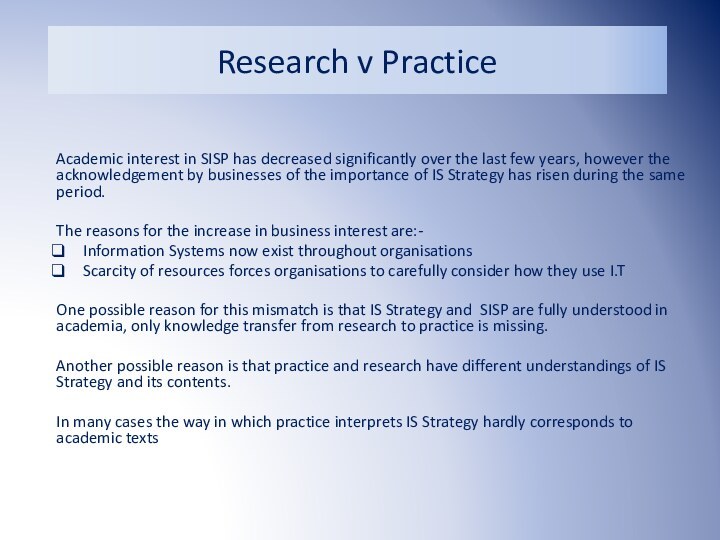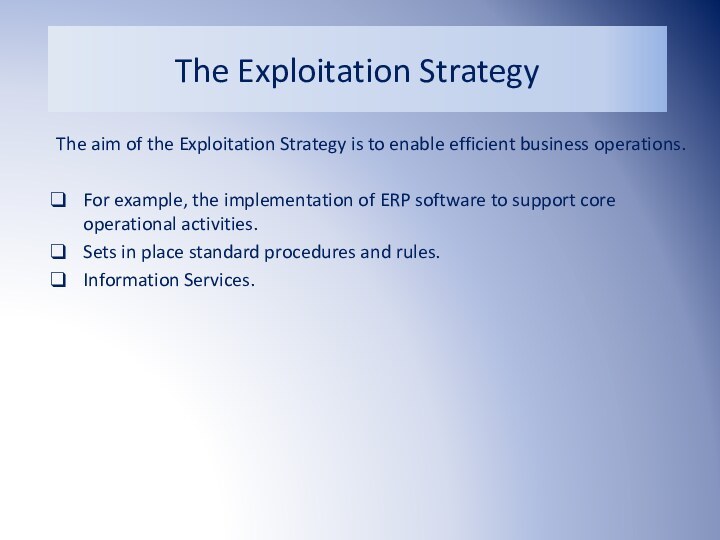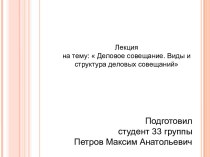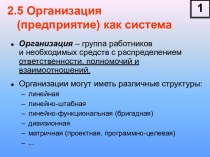Debate.
Research v Practice
The Shift from Strategy to Strategizing
Gallier’s New
Problem Oriented Strategizing FrameworkThe Exploration, Exploitation and Change Management Strategy
Advantages and Criticisms
Using the New Strategizing Framework in Practice

















































